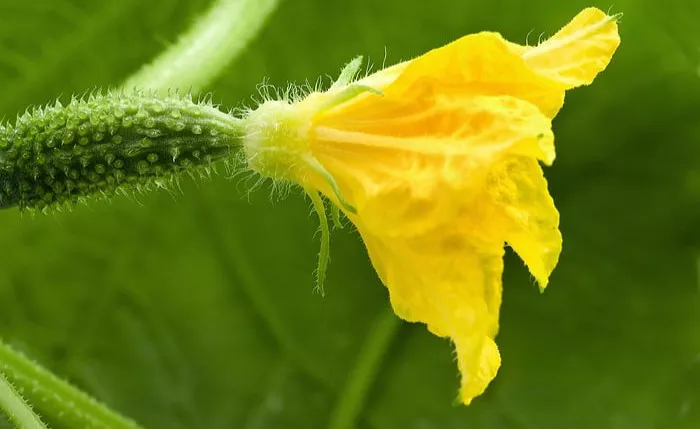Cucumber plants are a favorite among gardeners for their refreshing fruits and relatively easy cultivation. However, one common issue that can frustrate growers is wilting. Wilting cucumber plants can be a sign of various problems, ranging from environmental stress to diseases. In this article, we’ll explore the primary causes of cucumber plant wilting, how to identify them, and what steps you can take to revive your plants and prevent future issues.
1. Environmental Stress
Underwatering
Symptoms
- Leaves appear dry and crispy.
- Soil feels dry to the touch.
Solution
- Water the plants deeply and consistently.
- Ensure the soil remains moist but not waterlogged.
Overwatering
Symptoms
- Leaves turn yellow and wilt.
- Soil feels soggy or waterlogged.
Solution
- Allow the soil to dry out between waterings.
- Improve drainage by adding organic matter or using raised beds.
Extreme Temperatures
Symptoms
- Wilting during the hottest part of the day.
- Leaves may recover in the evening.
Solution
- Provide shade during extreme heat.
- Use mulch to keep the soil cool and retain moisture.
2. Soil Issues
Poor Drainage
Symptoms
- Water pools on the soil surface.
- Roots appear brown and mushy.
Solution
- Amend the soil with compost or sand to improve drainage.
- Consider using raised beds or containers.
Nutrient Deficiencies
Symptoms
- Yellowing leaves.
- Stunted growth.
Solution
- Test the soil to identify nutrient deficiencies.
- Apply a balanced fertilizer or organic amendments like compost.
3. Pests
Aphids
Symptoms
- Curling and wilting leaves.
- Presence of small, green or black insects.
Solution
- Spray plants with insecticidal soap or neem oil.
- Introduce beneficial insects like ladybugs.
Cucumber Beetles
Symptoms
- Holes in leaves.
- Wilting and stunted growth.
Solution
- Use row covers to protect young plants.
- Apply insecticidal sprays as needed.
Spider Mites
Symptoms
- Fine webbing on leaves.
- Leaves appear speckled and wilted.
Solution
- Increase humidity around plants.
- Use miticides or neem oil.
4. Diseases
Bacterial Wilt
Symptoms
- Sudden wilting of leaves.
- Sticky, white sap when stems are cut.
Solution
- Remove and destroy infected plants.
- Control cucumber beetles, which spread the disease.
Fusarium Wilt
Symptoms
- Yellowing and wilting of lower leaves.
- Brown discoloration in the vascular tissue.
Solution
- Plant resistant varieties.
- Rotate crops to prevent soil-borne pathogens.
Verticillium Wilt
Symptoms
- Yellowing and wilting of leaves.
- Brown streaks in the stem.
Solution
- Remove and destroy infected plants.
- Practice crop rotation and soil solarization.
Powdery Mildew
Symptoms
- White, powdery spots on leaves.
- Leaves may wilt and die.
Solution
- Apply fungicides or organic treatments like baking soda solution.
- Ensure good air circulation around plants.
5. Root Problems
Root Rot
Symptoms
- Wilting and yellowing leaves.
- Brown, mushy roots.
Solution
- Improve soil drainage.
- Avoid overwatering and ensure proper spacing.
Girdling Roots
Symptoms
- Wilting and stunted growth.
- Roots circling the base of the plant.
Solution
- Carefully loosen or cut girdling roots.
- Plant in well-prepared soil to encourage healthy root growth.
6. Improper Planting
Planting Too Deep
Symptoms
- Wilting and poor growth.
- Stem rot at the soil line.
Solution
- Plant seedlings at the correct depth.
- Ensure the root ball is level with the soil surface.
Transplant Shock
Symptoms
- Wilting after transplanting.
- Slow growth.
Solution
- Harden off seedlings before transplanting.
- Water thoroughly after transplanting and provide shade if needed.
7. Chemical Damage
Herbicide Drift
Symptoms
- Wilting and distorted leaves.
- Yellowing or browning of foliage.
Solution
- Avoid using herbicides near cucumber plants.
- Rinse plants with water if drift occurs.
Over-Fertilization
Symptoms
- Wilting and yellowing leaves.
- Salt buildup on the soil surface.
Solution
- Flush the soil with water to remove excess fertilizer.
- Follow recommended application rates for fertilizers.
8. Preventive Measures
Proper Watering
- Water deeply and consistently.
- Use mulch to retain soil moisture.
Soil Health
- Test and amend soil as needed.
- Rotate crops to prevent soil-borne diseases.
Pest Control
- Monitor plants regularly for pests.
- Use organic or chemical controls as needed.
Disease Management
- Plant resistant varieties.
- Practice good sanitation and crop rotation.
Conclusion
Wilting cucumber plants can be caused by a variety of factors, including environmental stress, soil issues, pests, diseases, root problems, improper planting, and chemical damage. By understanding these causes and taking appropriate action, you can revive your plants and prevent future wilting.
Regular monitoring, proper watering, and good cultural practices are key to maintaining healthy cucumber plants. Whether you’re a beginner or an experienced gardener, these tips will help you grow thriving cucumbers and enjoy a bountiful harvest. Happy gardening!


